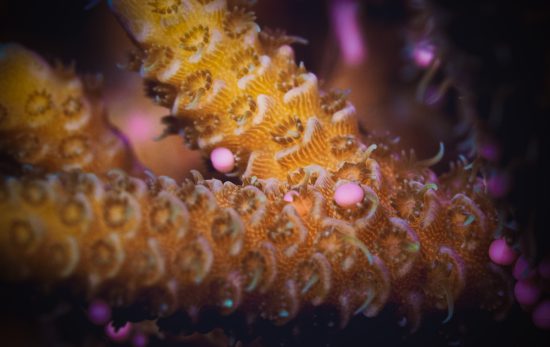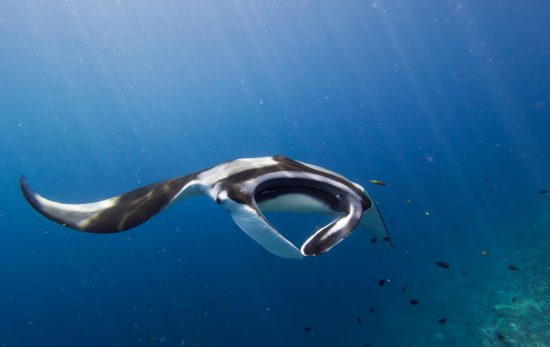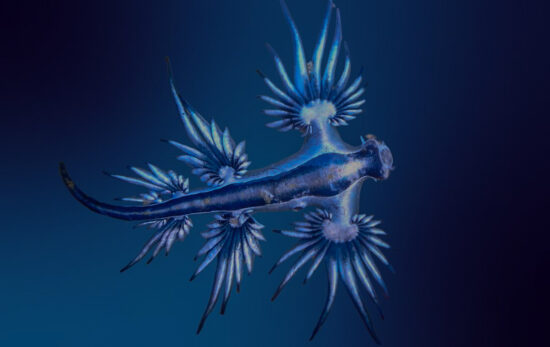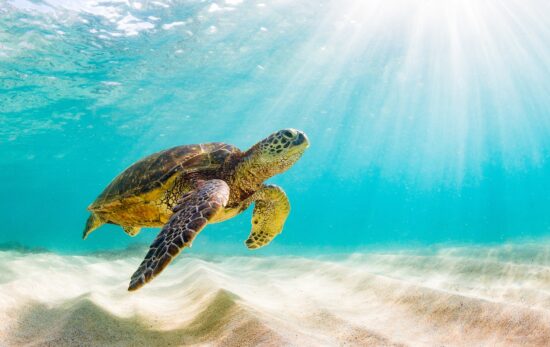To most, just the name ‘whale shark’ conjures up feelings of excitement, mystery and curiosity. But how much do you really know about the world’s largest shark?
Dive into some of our favorite shark amazing facts below, including surprising insights about this majestic marine animal.
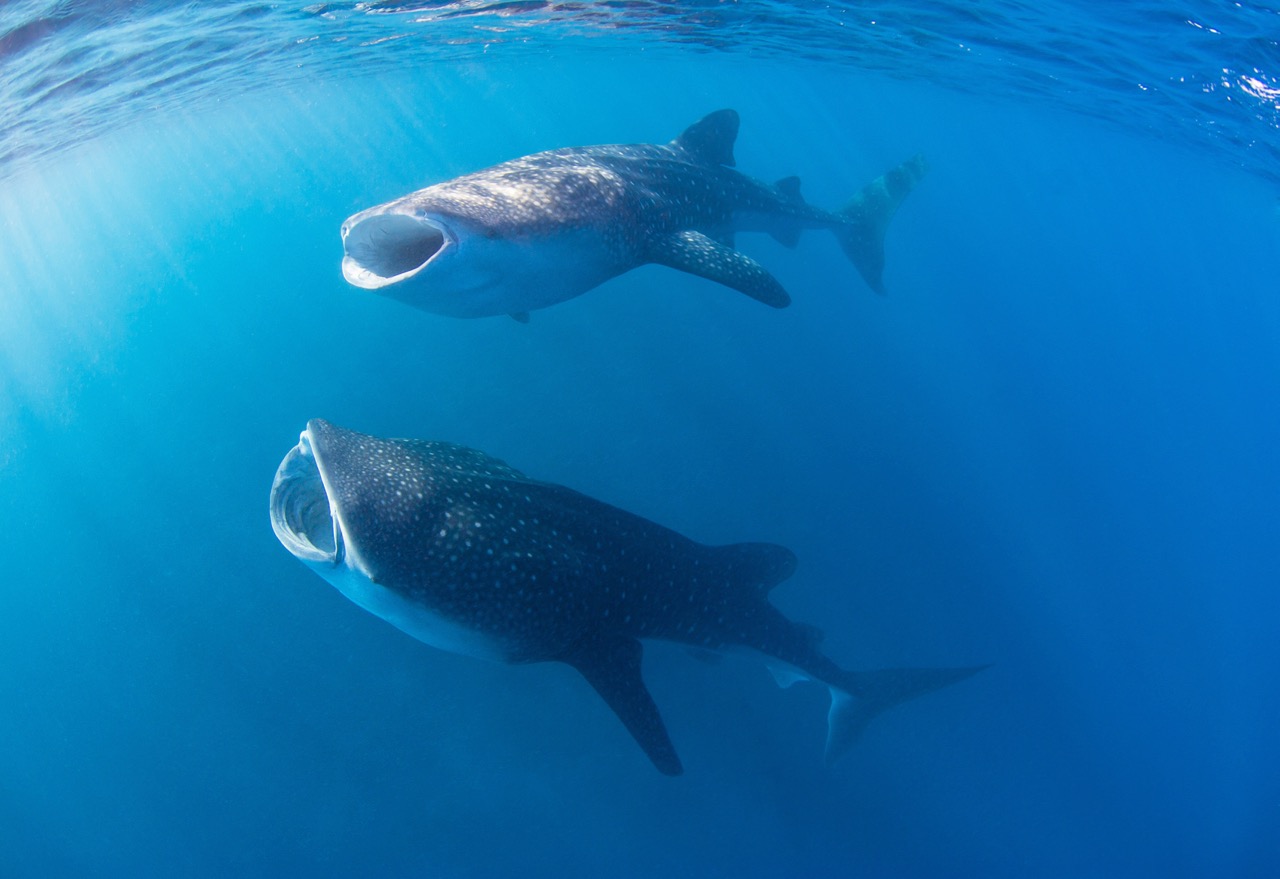
1. They’re Not Whales
Despite the confusing name, whale sharks are not actually whales. They got their name for their size and their feeding habits. Like many whales, they are filter feeders. But they are fish, breathe through their gills, and have cartilage instead of bones, making them true sharks.
2. They are the Largest Fish in the Ocean
Whale sharks have been known to measure up to 62 feet (19 meters) in length, which makes them longer than a school bus, and they can weigh up to 30 tons. However, as so few of them live to adult age, most specimens don’t reach more than 13 feet (4 meters) long.
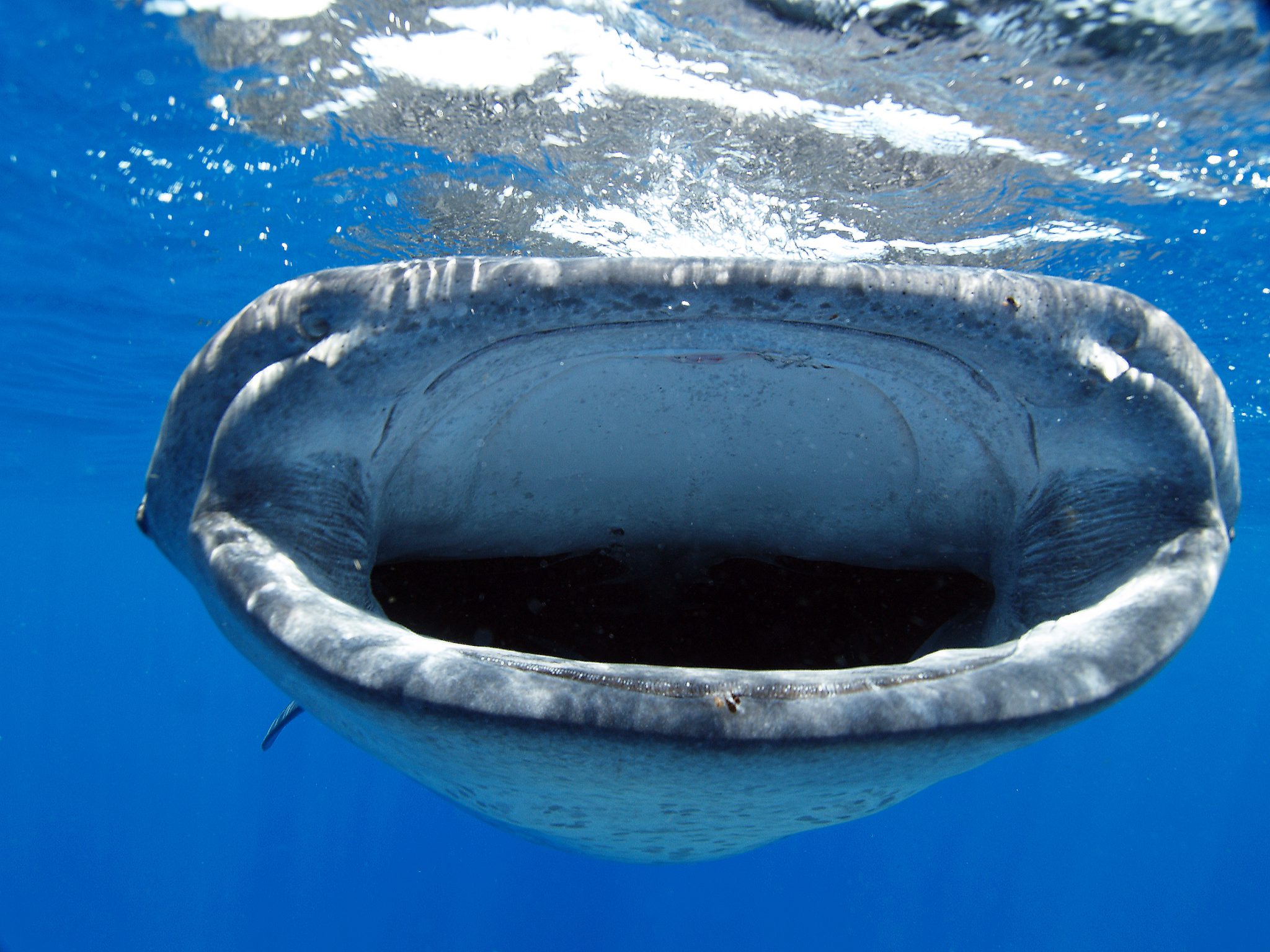
3. Whale Sharks are Filter Feeders
Being filter feeders, whale sharks cannot bite nor chew – they are truly the gentle giants of the ocean. Instead, they mostly sieve plankton through their gills for nourishment. During feeding, their mouth can even stretch over 1 meter (4 feet) wide!
4. They Can Process More Than 6,000 Liters of Water
Using their gills, whale sharks can process over 6,000 liters (1500 gallons) of water every hour. Once the whale shark draws in a big gulp of plankton-rich ocean water, it closes its mouth and expels the water through a set of large gills. The gills act like strainers, filtering out the water while keeping solid organisms smaller than about 2 centimeters (3/4 inch) in diameter in their mouth.
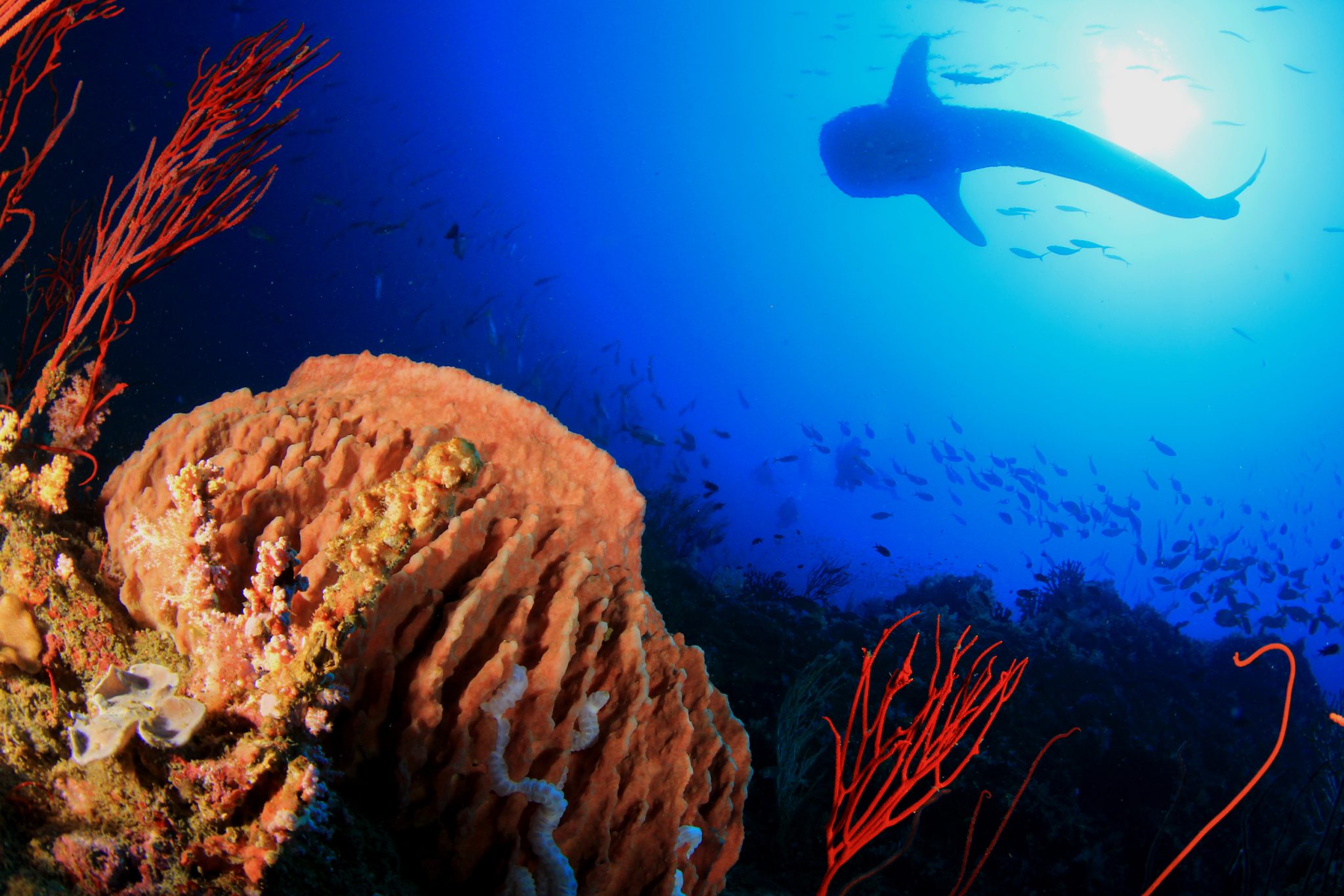
5. They Have Thousands of Teeth…
Ever wondered, “Do whale sharks have teeth?” The answer is yes. Although they don’t bite or chew, whale sharks do have thousands of teeth. In fact, they have about 3,000 tiny whale shark teeth, less than 2.5 centimeters (1 inch) long, that help them eat small shrimp, fish, and plankton.
6. … And They Even Have Teeth on Their Eyes
As well as the teeth in their mouth, whale sharks have teeth on the surface of their eyes! These tiny teeth are dermal denticles, similar to the teeth-like scales covering their bodies. Scientists believe they are a type of armor for physical protection, as unlike many other sharks, whale sharks don’t have eyelids.
7. Whale Sharks Have Fingerprints
Like human fingerprints, whale sharks have a unique pattern of spots that allow individual sharks to be identified. By taking photos and cataloging sightings, divers can help researchers to track individuals.
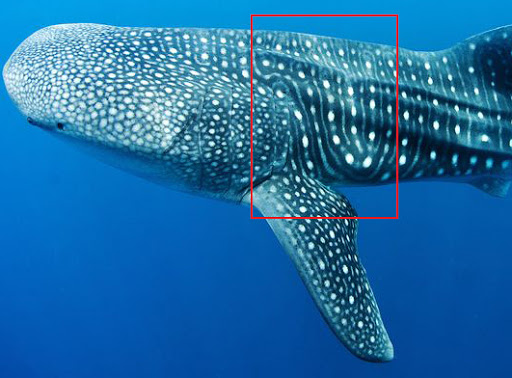
8. They Give Birth to Live Young
Whale sharks are ovoviviparous. This means that they produce eggs, but the eggs develop and hatch inside the mother. Once whale sharks have reached sexual maturity (around 30 years old) and fallen pregnant, they give birth to live young that are already 16 to 24 inches (40 to 60 cm) long.
9. Not All Whale Sharks Survive to Adulthood
After birth, the mother will leave her young to fend for themselves. Adult whale sharks are rarely preyed upon thanks to their size, but juveniles are an easier target. Predators include orcas, tiger sharks, and great white sharks. As a result of predation and other dangers, only 10% of whale sharks actually survive to adulthood.
10. Whale Sharks Have an Incredibly Long Lifespan
When they do manage to survive the perils of the seas as they grow to adult size, these beautiful creatures are estimated to have a lifespan of 70 to 100 years!
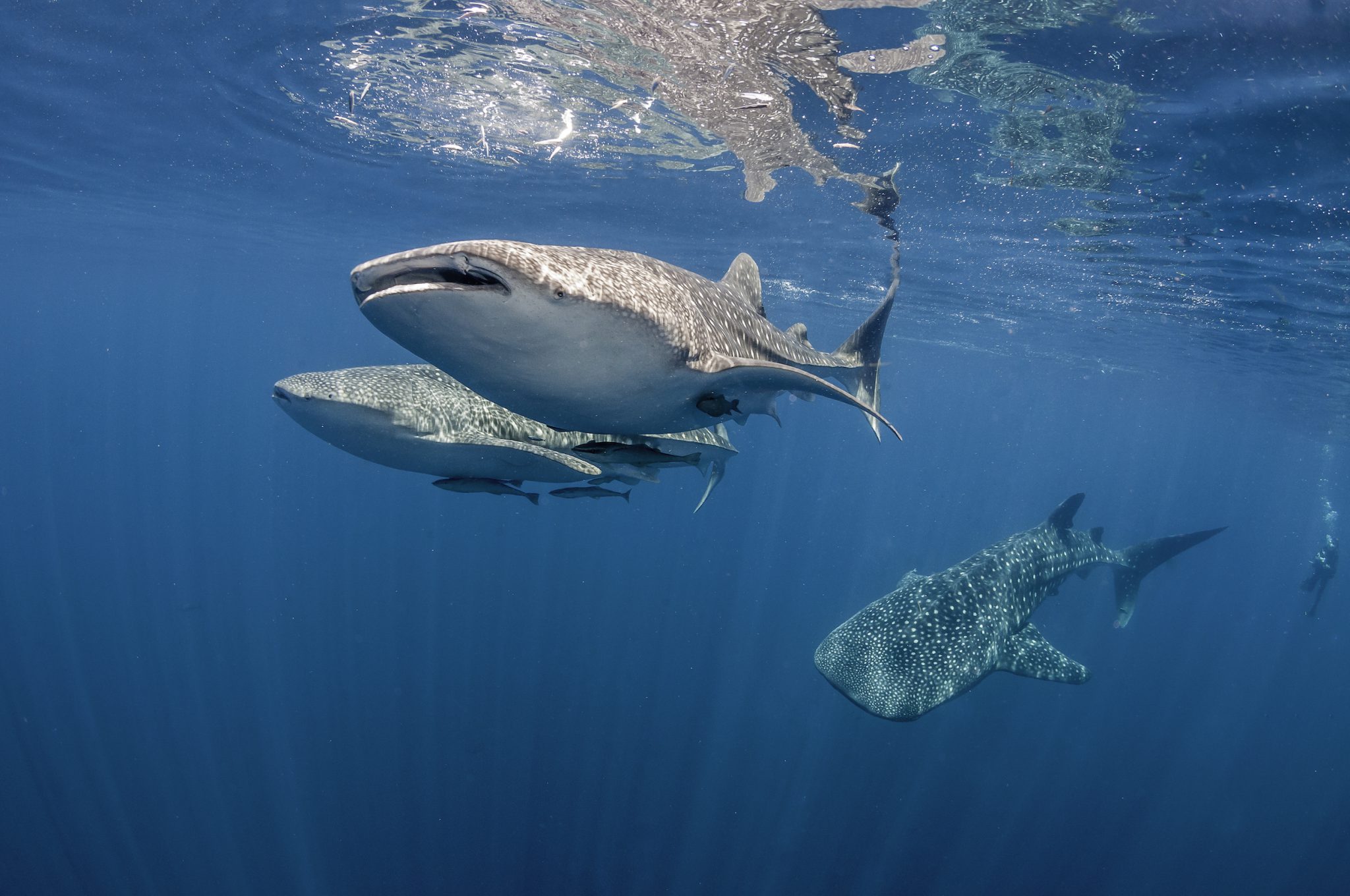
11. Whale Sharks are Endangered
Unfortunately, the IUCN has declared the whale shark to be endangered worldwide. Fisheries, bycatch losses, and demand for shark fins, liver oil, skin, and meat are the main threats to the species.
Read more about how you can help protect whale sharks, or sign up for the PADI AWARE Shark Conservation specialty to help ensure this species survives.
12. Whale Sharks Are Slow Swimmers
Whale sharks might be slow, but they migrate very long distances. Moving at speeds of no more than 4 kph (3 mph), a single whale shark can travel 12,874 km (8,000 miles) in just three years. Whale sharks gather in large numbers during defined seasons in specific feeding locations, but it’s not known how they time it so perfectly to arrive together.
13. Whale Sharks Are Deep Divers
While adult whale sharks are often found feeding at the surface, they have been known to dive to depths of up to 3,280 feet (1,000 meters).
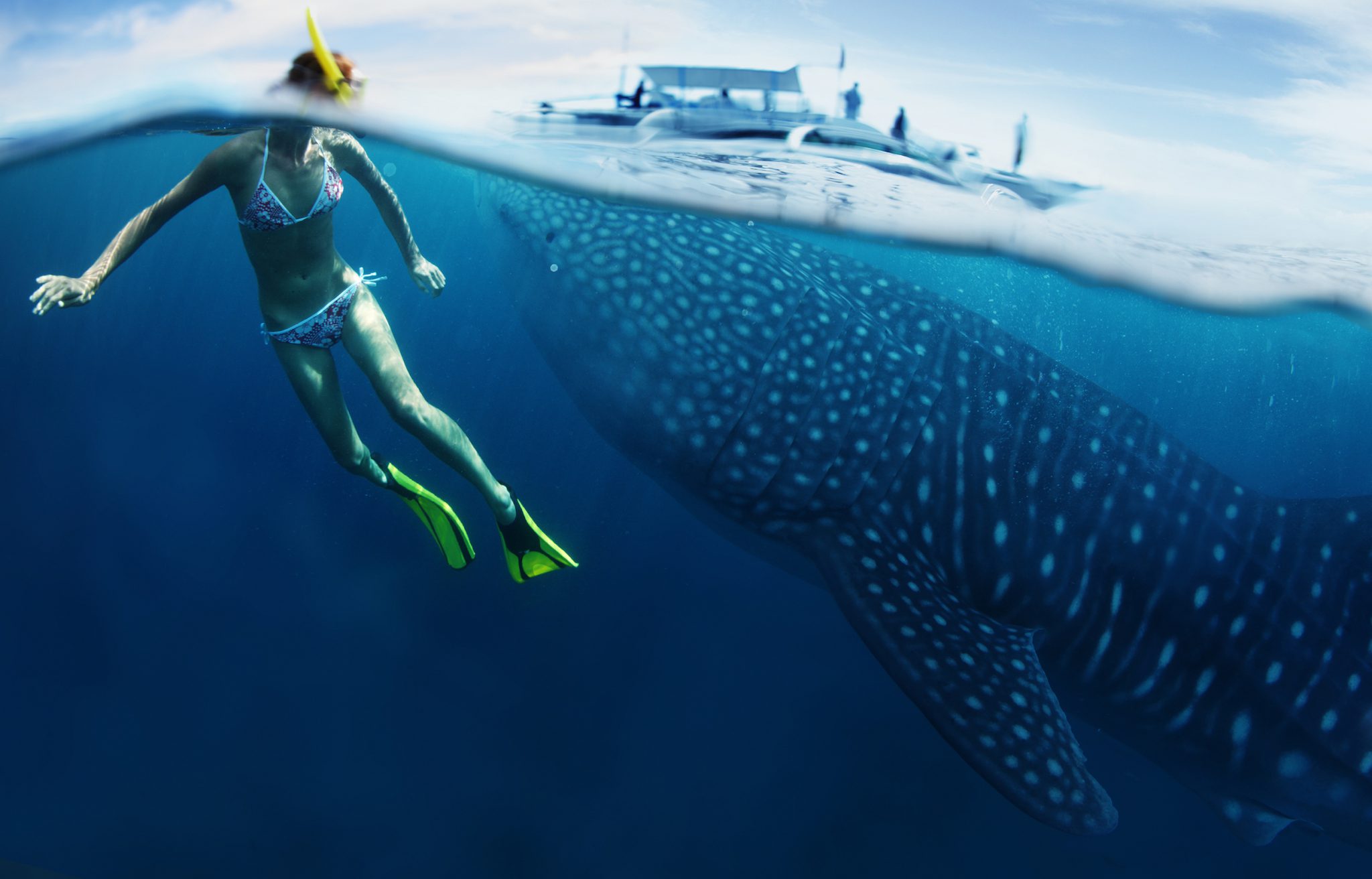
14. They Live All Over the World Wherever It’s Warm
Whale sharks are very widespread. They are found in all warm and tropical waters around the world, from the Caribbean to the Indian Ocean, the Pacific to the Red Sea. They’re also pelagic, mostly living away from the coasts, and they prefer water temperatures above 21º C (70º F).
15. No One Knows Where They Give Birth
Whale sharks are migratory, but we don’t know where they breed or give birth. It’s thought that the females travel to very remote locations to give birth in places safe from predators, but we still have a lot to learn about their movements.
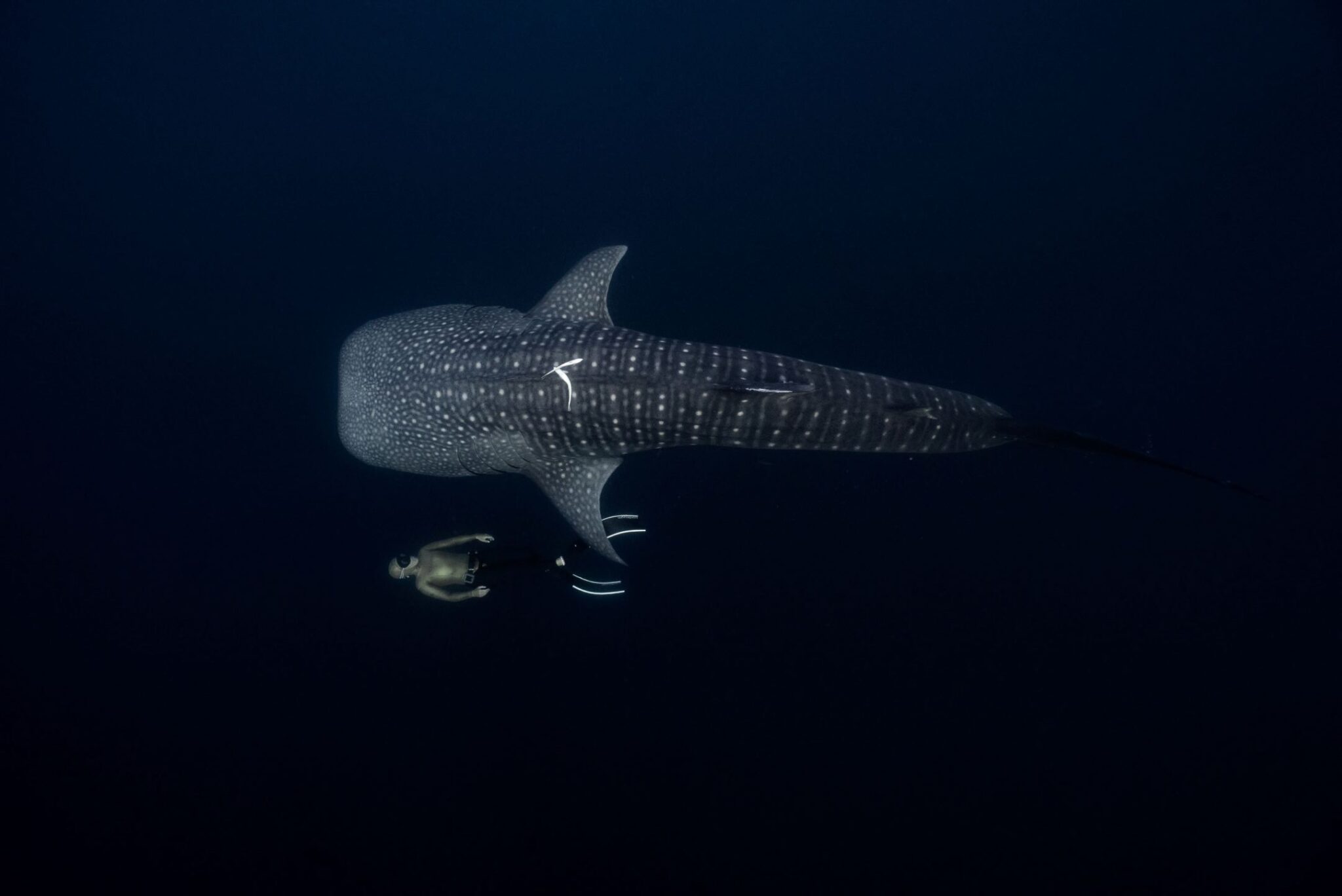
Ready To Dive With the Ocean’s Biggest Fish?
There’s a reason why these gentle giants are at the top of every scuba diver’s bucket list. Swimming or diving with whale sharks is one of the most magical experiences you can have underwater. So if you’re not already a certified scuba diver, click below to learn how you can make it happen.

